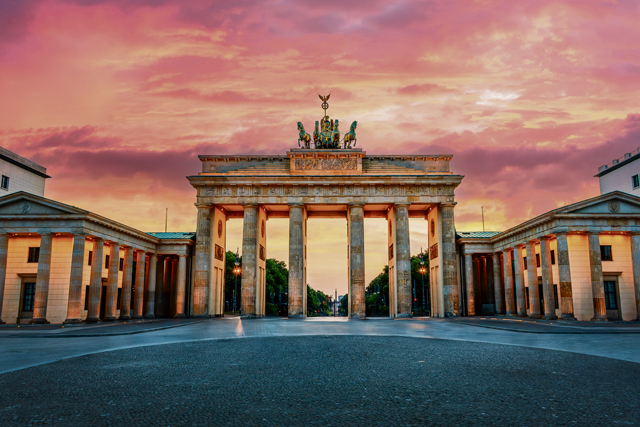
Welcome to the Kaiserslautern Military Community. Willkommen in Deutschland!
Whether you are new to the area or have been around for a while, there are probably a few things that you don’t know about your home away from home. We’ve put together a few fun facts and figures to get you acquainted with your new home right in the middle of Europe.
Germany, with its official name Federal Republic of Germany (Bundesrepublik Deutschland), currently has 84 million inhabitants. The capital is Berlin far northeast and about 650 kilometers (400 miles) from Kaiserslautern. Under favorable road conditions and without a stau (congestion) you can drive the distance in about six hours. It is the seat of the Bundestag (federal parliament) and Bundesrat (federal council), and Olaf Scholz has been the Chancellor since Dec. 8, 2021.
Bundesländer
Germany is made up of 16 Bundesländer (states) with three of them, Berlin, Hamburg and Bremen, being city states. This means that they consist of one single city which are also states of their own.
The 10 states in the north, west, south and southwest are generally called the “old states” as they belonged to West Germany during the division of the country from 1949 to 1989. Fives states in the northeastern section are commonly called the “new states.” Berlin held a special status since it belonged to West Germany but was located in the middle of the eastern zone and could only be reached via three transit routes or by air.
Bavaria is the largest state and borders Austria and the Czech Republic. It is known for its Alpine Region, a wine growing region in the northern part and its capital Munich is world famous for its annual October Fest. Its neighbor to the west is Baden-Württemberg with a large wine growing region, Germany’s largest Lake Constance to the south and is also home to the Black Forest region. Hessen to the north is in the center of Germany and is well-known for its rolling hills, quaint towns and its specialty Appelwoi (apple wine) as well as its banking hub Frankfurt along with Germany’s largest airport.
Kaiserslautern is located in Rheinland-Pfalz, which produces two-thirds of Germany’s wine along the Moselle, Rhein and Nahe Rivers with cozy wine towns along the Weinstrasse (German Wine Road). The capital is Mainz and birthplace of the printing press. The small state of Saarland, just 20 kilometers down the road towards Saarbrücken, is the smallest state and joined West Germany in the year 1959 based upon an agreement with France.
Our northern neighbor Nordrhein-Westfalen is the most densely populated state with large cites such as Cologne, the capital Düsseldorf, and the industrial Ruhrpott region with the cities of Dortmund, Duisburg, Essen and Bochum. Niedersachsen, a land of horses, agricultural plains, a coastal region along the North Sea with white beaches, islands and a maritime flair is just north.
The tiny city state of Bremen, consisting of Bremen itself, famous for its city musicians, and Bremerhaven, best known as port of arrival for POVs and heavy military equipment, is Germany’s smallest city state.
Hanseatic Hamburg is home to Germany’s largest port, has been a significant sea hub since the Middle Ages and is Germany’s second largest city. Schleswig-Holstein lies between the North Sea and the Baltic Sea, is home to many fishermen and the Wadden Sea natural habitat, and borders Denmark to the north.
The five “new states,” formerly on East German territory, were enclosed by a 1,400 kilometer (870 mile) inner German border until 1989. Thüringen is just east of Hessen and was home to Protestant Reformer Martin Luther. Sachsen-Anhalt is known as the land of windmills and is the largest producer of wind energy in the eastern states. Mecklenburg-Vorpommern lies along the Baltic Sea, has fabulous sandy beaches and Rügen is Germany’s largest island. Sachsen and Brandenburg both border Poland along the Oder-Neisse-Line, established in 1949.
Berlin lies in the middle of Brandenburg and is Germany’s largest city with 3.6 million inhabitants. While it was divided for 40 years, East Berlin was the capital of the German Democratic Republic, and Bonn was the provisional capital of the Federal Republic of Germany during that time.
If you’re interested in detailed descriptions of the individual states, visit kaiserslauternamerican.com, and search “State of the Art.”
Fun facts
- Zugspitze at 2,962 meters (9,717 feet) is the highest mountain and was first climbed to the peak in August 1820.
- Rhein is the longest river in Germany with 865 kilometers of its total length of 1,233 kilometers flowing through the country.
- Germany has a total coastal area of 2.380 kilometers (including islands), while 1.585 kilometers are mainland along the North and Baltic Seas.
- The longest distance between Glückburg in the north and Sonthofen in the south is almost exactly 1,000 kilometers.
- Germany fits into the United States 28 times, and 4.83 times into Alaska.
- Wilstermarsch in southeast Schleswig-Holstein is Germany’s deepest point at 3.54 meters (11 feet) below sea level.
- Arnis in Schleswig-Holstein with a population of 300 inhabitants is Germany’s smallest city.
- Trier is Germany’s oldest city, founded by Celts about 3,000 years ago, and famous for its Roman ruins and the oldest bridge in the country.
- Skywalk in Willingen (Hessen) is the world’s longest pedestrian suspension bridge, it is 665 meters (2181 feet) long, 100 meters (328 feet) above ground and was built in a Tibetan style.
- Quedlinburg (Sachsen-Anhalt) was voted the prettiest city, Ludwigshafen (Rheinland-Pfalz) the most unattractive.
- The Palatinate Forest is Germany’s largest coherent forest, covers a large part of Rheinland-Pfalz and stretches into France.
- And, last but not least, Kaiserslautern and county are right in the heart of it and have the largest American community outside of the United States with about 50,000 people.


